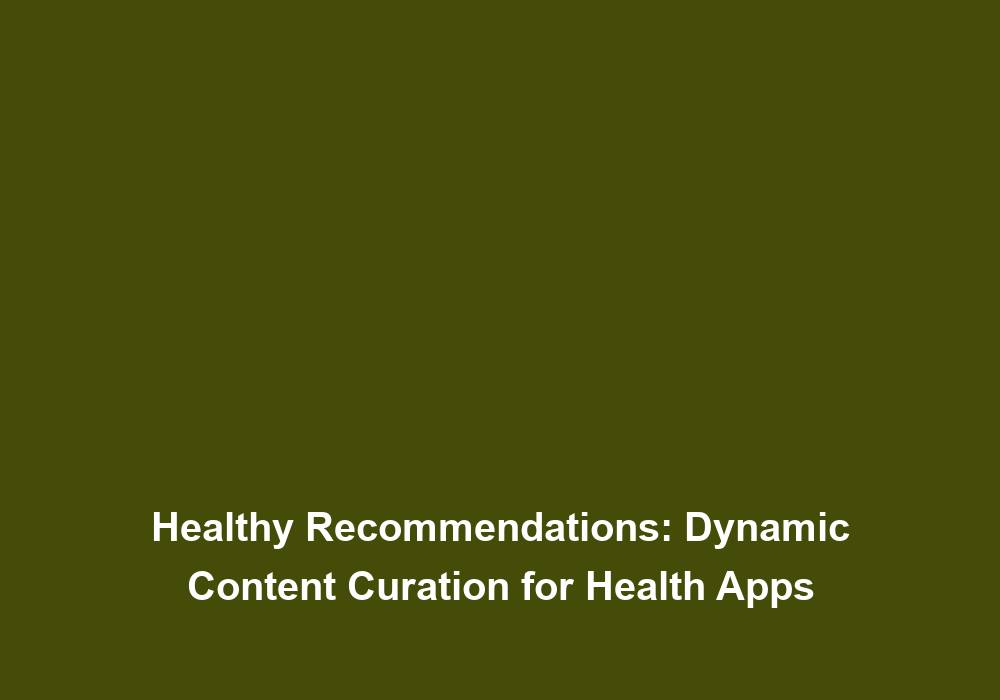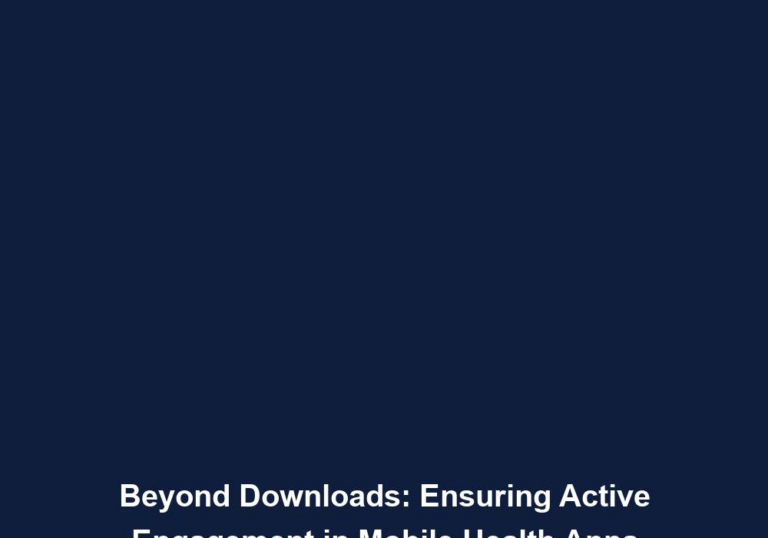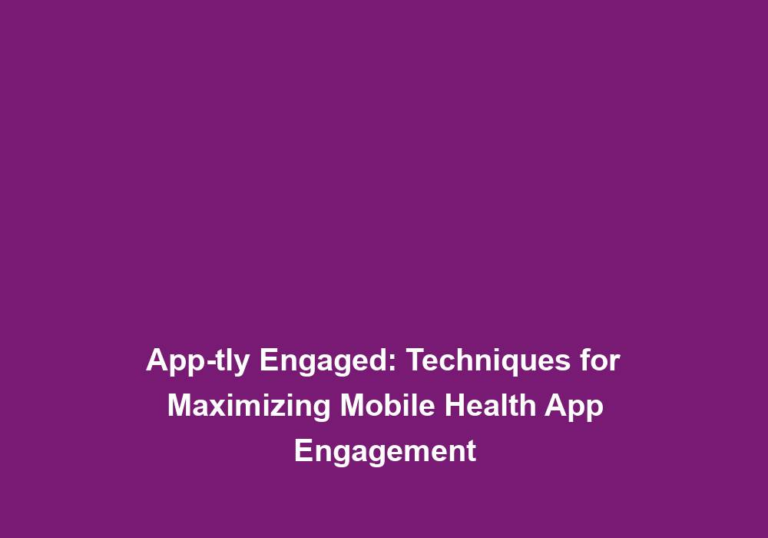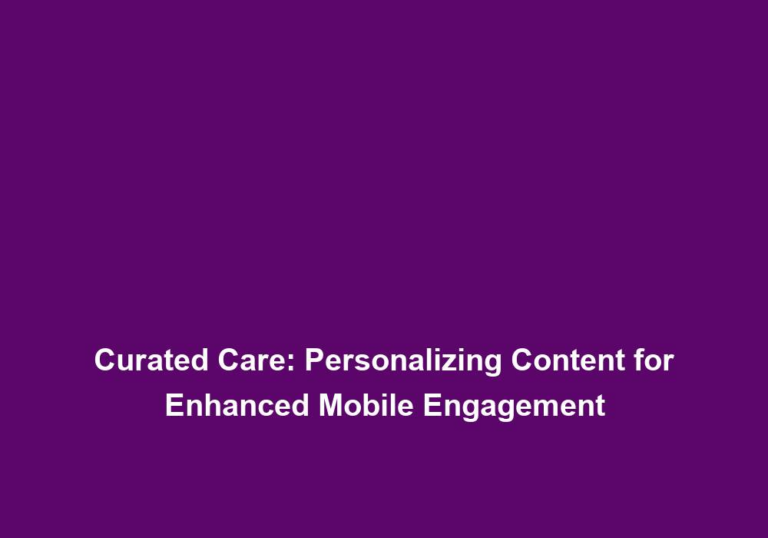Healthy Recommendations: Dynamic Content Curation for Health Apps
In today’s fast-paced world, health apps have become a popular tool for individuals seeking to improve their overall well-being. These apps offer a wide range of features, from tracking physical activity and monitoring sleep patterns to providing personalized diet plans and offering virtual consultations with healthcare professionals. However, with the abundance of health apps available in the market, it can be overwhelming for users to find the most relevant and accurate information. This is where dynamic content curation plays a crucial role in ensuring that health apps provide valuable and up-to-date recommendations to their users.
What is Dynamic Content Curation?
Dynamic content curation is the process of continuously sourcing, organizing, and presenting relevant content to users based on their specific needs and interests. In the context of health apps, it involves leveraging artificial intelligence and machine learning algorithms to analyze user data and preferences, and then delivering personalized recommendations that align with their health goals and requirements.
Dynamic content curation goes beyond simply providing general information to all users. It takes into account individual characteristics such as age, gender, health conditions, fitness goals, dietary preferences, and lifestyle habits to tailor the recommendations to each user’s unique needs. By constantly updating and refining its content, a health app can ensure that users receive the most accurate and relevant information to help them achieve their health and wellness goals.
The Importance of Dynamic Content Curation in Health Apps
-
Personalized User Experience: By curating dynamic content, health apps can offer users a highly personalized experience. This means that individuals can receive recommendations tailored to their specific health conditions, goals, and preferences. For example, if a user has diabetes, the app can provide personalized meal plans and exercise routines that are suitable for managing their condition. Whether it’s suggesting workout routines, healthy recipes, or mindfulness exercises, dynamic content curation ensures that users receive information that is relevant and valuable to them.
-
Accuracy and Relevance: The field of healthcare is constantly evolving, with new research and findings emerging on a regular basis. By leveraging dynamic content curation, health apps can ensure that the information provided to users is accurate, up-to-date, and evidence-based. This helps to build trust and credibility among users, who can rely on the app as a reliable source of health-related information. The algorithms used in dynamic content curation can analyze the latest research and update the recommendations accordingly, ensuring that users have access to the most reliable information.
-
Motivation and Engagement: One of the challenges faced by health app developers is user engagement and motivation. Many users download health apps with the intention of improving their health and fitness, but often struggle to stay motivated in the long run. Dynamic content curation can address this challenge by providing users with fresh, varied, and interesting content. For example, the app can offer new workout routines or healthy recipes each week to keep users engaged and motivated. By keeping users engaged and motivated, health apps can increase the likelihood of individuals sticking to their health and wellness goals.
-
Targeted Advertising and Partnerships: Dynamic content curation also presents opportunities for targeted advertising and partnerships within health apps. By analyzing user data and preferences, health apps can identify opportunities to collaborate with relevant brands and deliver targeted advertising messages. For example, a user who regularly tracks their running activity may receive recommendations for running shoes or fitness apparel. This not only enhances the user experience but also provides revenue opportunities for health app developers. By partnering with relevant brands, health apps can create a win-win situation where users receive targeted recommendations and developers generate additional revenue.
Best Practices for Dynamic Content Curation in Health Apps
To ensure effective dynamic content curation in health apps, developers should consider implementing the following best practices:
1. Comprehensive User Profiles
Collecting detailed user profiles is vital for accurate content curation. Health apps should gather information such as age, gender, health conditions, fitness goals, dietary preferences, and lifestyle habits. This data will serve as the foundation for personalized recommendations and ensure that users receive relevant content that aligns with their needs. In addition to these basic demographics, developers should also consider collecting information on user preferences, such as preferred exercise types or dietary restrictions, to further refine the recommendations.
2. Continuous Data Analysis
Dynamic content curation relies on continuous data analysis. Developers should leverage machine learning algorithms to analyze user behavior, preferences, and feedback. By monitoring user interactions within the app, health apps can refine their content recommendations and improve the overall user experience over time. For example, if a user consistently skips certain types of content or engages more with specific topics, the algorithm can adjust the recommendations accordingly to better match the user’s interests and preferences.
3. Collaboration with Healthcare Professionals
Collaborating with healthcare professionals adds credibility and expertise to the curated content. Health apps should consider partnering with medical experts, nutritionists, fitness trainers, and other qualified professionals to ensure that the recommendations provided are accurate, reliable, and safe for users to follow. These professionals can contribute their knowledge and expertise to the app’s content, ensuring that the information provided is evidence-based and aligns with established medical guidelines.
4. Regular Content Updates
To keep users engaged, it is essential to regularly update the content within the app. This includes adding new articles, videos, recipes, and workout routines to ensure that users always have something fresh and exciting to explore. Regular content updates also demonstrate the commitment of the health app towards providing up-to-date and valuable information. By staying current with the latest trends and research in the health field, the app can provide users with the most relevant and timely recommendations.
5. User Feedback and Ratings
Health apps should provide mechanisms for users to provide feedback and rate the content they receive. This enables developers to understand user preferences and make necessary improvements to the content curation process. By actively listening to user feedback, health apps can continuously enhance the relevance and quality of their recommendations. User feedback can also help identify any issues or gaps in the content, allowing developers to address them and provide an even better user experience.
Conclusion
Dynamic content curation plays a vital role in shaping the user experience of health apps. By leveraging artificial intelligence, machine learning, and user data analysis, health apps can provide personalized and accurate recommendations to users. This not only enhances user engagement and motivation but also ensures the delivery of valuable and trustworthy health-related information. By following best practices and continuously refining their content curation process, health apps can become indispensable tools for individuals striving to improve their overall well-being.





